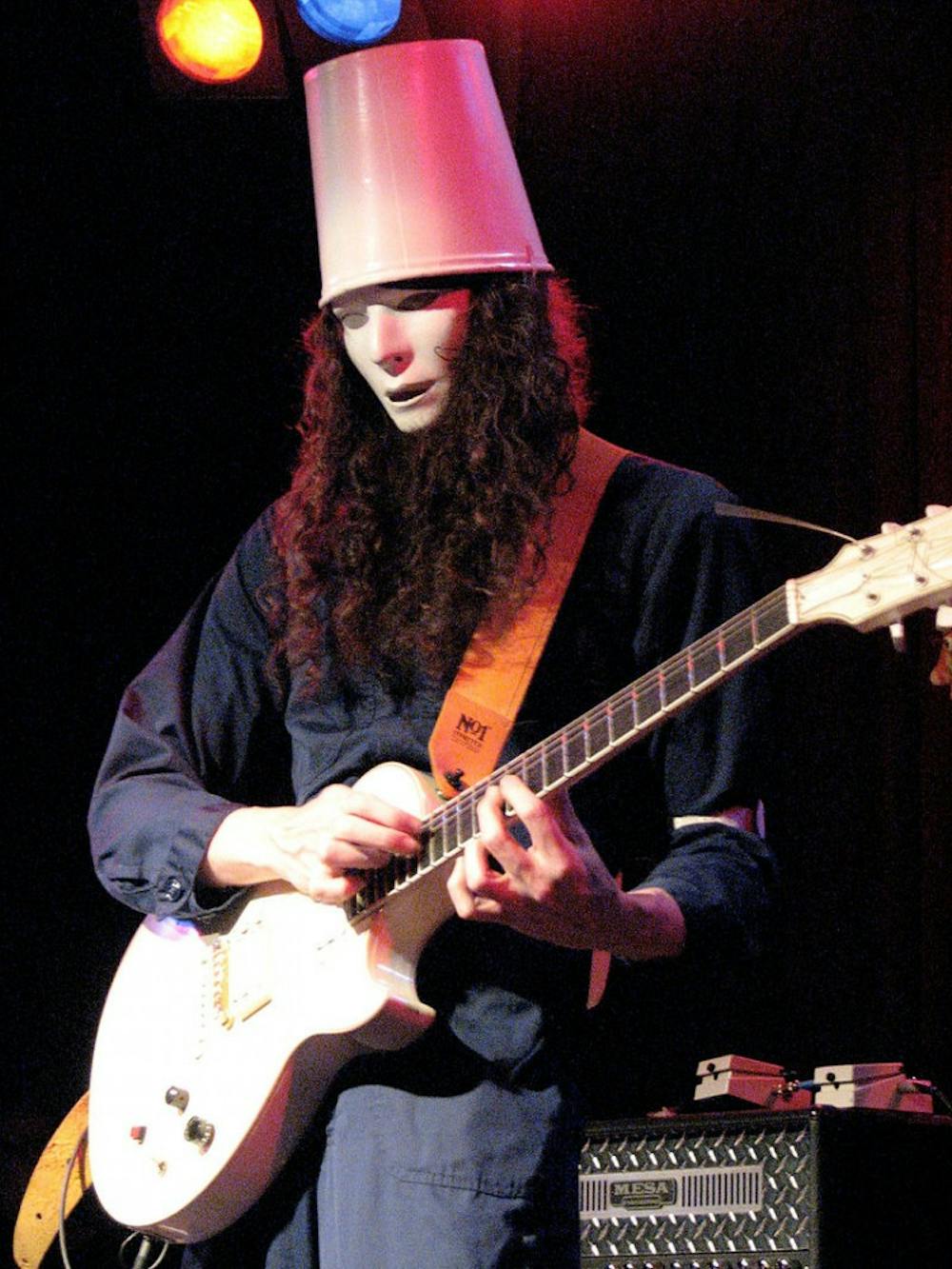Music, like other forms of art, deals with expression. Artists manipulate sound and prose in an attempt to communicate the ineffable, and listeners relate to music that resonates with them. Music helps people understand their feelings or forget about them entirely. This is what gives artists the unique ability of letting their expression speak on the behalf of others, especially when others cannot express themselves as readily. This is why Buckethead is something of an enigma.
After 45 minutes of ominous lights cutting through artificial fog with obscure, foreign soundbites reverberating throughout the theatre, the man himself emerged from the shadows. Towering over the audience at 6 feet 6 inches, Buckethead calmly walked on stage, picked up his guitar, and started playing. He did not say a single word the entire performance and only took a few short breaks due to his heart arrhythmia. Otherwise, he was relentless, and the crowd clung to his every movement.
Buckethead is largely regarded as one of the most technically-proficient guitar players in the world. Since venturing into music in 1987, Buckethead has recorded 305 studio albums and more than 50 collaborative albums, with genres ranging from funk to metal and avant-garde. He has even been voted No. 8 on Guitar and One magazine’s list of the "Top 10 Greatest Guitar Shredders of All Time." Few recordings exist of Buckethead speaking, and there are even fewer photos of him without his blank, expressionless white mask. He wears a KFC bucket on his head as a hat, and his artistic coming-of-age story is shrouded in Disney mythology and a reverence for Michael Jordan.
Buckethead opened the set with a rendition of his popular song “Big Sur Moon” before diving head-first into an endless barrage of heavily distorted riffs and solos. Unlike most ultra-technical disciples of Steve Vai, Buckethead is capable of adding emotional nuance to his playing — it’s not simply scales played at the speed of light. Twenty minutes into the set, however, Buckethead exchanged his guitar for a pair of nunchucks and proceeded to channel his inner Bruce Lee to what appeared to be the soundtrack of a mid-1990s B-class Sci-Fi movie. Once the routine finished, Buckethead seamlessly picked up his guitar and continued as if nothing had happened.
After a few more face-melting licks, Buckethead once more placed his guitar aside. The lights dimmed abruptly and an eerie remix of old Disney movie music started playing. This time, rather than nunchucks, Buckethead re-emerged from behind his amplifier stack with a large bag. Five minutes later, I was clutching a Star Wars miniature in complete shock and awe. Others around me were gripping chess sets and coloring books. All I understood was that everyone was having a great time.
What made this show incredible was its sheer novelty and genuine abstraction. Nothing flowed, everything was incongruous, yet it all made perfect sense. I scoured my mind fastidiously in an attempt to find the thread that unified Buckethead to a particular style, scene, group, fellow musician or to the outside world in general. But it was all in vain.
A Buckethead show will not remind you of anything. With no additional musicians or gear on stage, it is presence and skill that fill the space. No 10-minute solo is self-indulgent — no giant metal rooster perched on stage is kitsch. Entering the venue is like stepping into a parallel universe where the absurd becomes commonplace and no one can seem to get enough.





